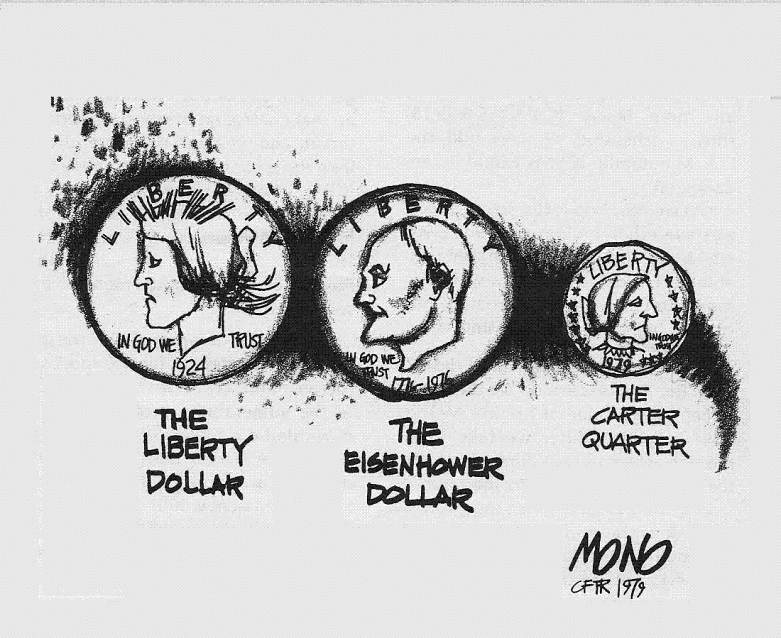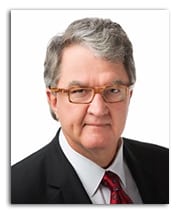
The Real Diehl is a select column by former United States Mint Director Philip N. Diehl, exclusively for CoinWeek …..
This series of articles will give readers an insider’s view of how Washington, D.C., works (and doesn’t work) from my perspective as director of the U.S. Mint
The complete story of how the Sacagawea dollar (aka, the Golden dollar) came to be has never been told, and the accounts that have been published get many of the details wrong. I hope to correct these shortcomings in this and the following post.
The story of the Sacagawea dollar cannot be understood outside the context of the failure of the Susan B. Anthony dollar (SBA) in 1980. When dollar coin legislation was filed in 1995, I conducted a quick post-mortem of the SBA to understand the causes of its failure.
 The first thing I discovered was the remarkable fact that the experience was so negative for Mint staff you’d have thought it happened a year ago. The Mint was so thoroughly criticized, scapegoated really, that no one wanted to contemplate going through it all again.
The first thing I discovered was the remarkable fact that the experience was so negative for Mint staff you’d have thought it happened a year ago. The Mint was so thoroughly criticized, scapegoated really, that no one wanted to contemplate going through it all again.
I also discovered that the Mint had little to do with the SBA’s failure. Treasury had conducted a good analysis of what was required to make a new dollar coin successful, which Congress and Treasury largely ignored. In particular, the SBA was not sufficiently distinctive to avoid confusion with the quarter and, most crucially, the dollar note was not withdrawn along with the introduction of the SBA. The Mint simply followed orders from Congress and Treasury.
It didn’t help that the coin lacked aesthetic appeal. I was told that Treasury Secretary Michael Blumenthal found the design so unattractive that he initially rejected it, but that Ms. Anthony’s descendants insisted the coin reflect a realistic depiction of her. Perhaps the story is apocryphal.
 The SBA was also drawn into the 1980 presidential campaign. High inflation during the Carter administration was one of the hottest issues in the campaign. Republicans tied the unpopularity of the SBA to inflation and President Carter by dubbing the coin the “Carter quarter”, highlighting both the confusion between the two coins and the declining purchasing power of the dollar. It was a useful political twofer and it further tarnished the SBA.
The SBA was also drawn into the 1980 presidential campaign. High inflation during the Carter administration was one of the hottest issues in the campaign. Republicans tied the unpopularity of the SBA to inflation and President Carter by dubbing the coin the “Carter quarter”, highlighting both the confusion between the two coins and the declining purchasing power of the dollar. It was a useful political twofer and it further tarnished the SBA.
So when in early 1995 Senator Rod Grams (R-MN) filed legislation (S. 874) to create a new dollar coin, I greeted it with skepticism. To his credit, the bill called for the coin to be a distinctive golden color and required the dollar note to be withdrawn. But the bill was written without consulting the people who’d be tasked with minting the coin. When we considered the logistical challenges of executing the proposal as written, it was clear we would have another dollar coin fiasco on our hands.
A few examples: our single coin strip manufacturer lacked the capacity to produce the strip required to mint the six to nine billion coins we’d need under Senator Grams’ bill, and we did not yet know what alloy would meet the technical requirements of the bill. We also lacked the die-making and coin-production capacity to mint six to nine billion coins in the 18 months mandated by the bill.
Moreover, there was credible research indicating that if the dollar bill were withdrawn, then Americans were likely to substitute the $2 note instead of the dollar coin. The Federal Reserve was required to produce as many $2 notes as the public demanded, so we’d be stuck with a lot of dollar coins.
When the SBA failed, the Mint and the Fed were left with hundreds of million of the coins in our vaults. If the new dollar coin failed, we’d have billions of them on our hands.
I persuaded Treasury to oppose the bill, and on July 13, 1995, I testified before the Senate Banking Committee–Senator Grams was a member–in opposition to the bill. As a result of opposition from the Treasury and elsewhere, the bill died.
It was uncommon for a Mint director to take such a high profile on the Hill and in public discussions of coinage issues. The Mint typically laid low and lived with whatever laws were enacted. Not only had this practice led to the SBA embarrassment, but it also allowed Congress to run amok with the Mint’s commemorative coin program, which by 1995 had grown so large that it was an embarrassment to the nation and an abuse of coin collectors. Dateline NBC even broadcast an investigation of the program, and there was extensive negative coverage elsewhere.
The Mint was a very dysfunctional organization in 1995, and virtually everything that needed to be done to overhaul the place required an Act of Congress—literally. Addressing serious management issues stemming from political patronage, fixing the Mint’s financial management and information systems, acquiring modern coin production technology, improving customer service, increasing die-making capacity, reducing workplace injuries, transforming our security guards into a modern police force–all of it required the enactment of legislation.
There was no way to do any of this while keeping a low profile. I had spent much of my career in and around politics and government, including in the U.S. Senate, and I had a pretty good understanding of how to get things done. I was sworn in as director of the Mint in June 1994, and six months later Republicans took control of Congress-bad news for a Democratic administration. However, it worked out well for my agenda.
I developed strong partnerships with the Republican chairmen of two key House committees, Jim Lightfoot (Iowa) and Mike Castle (Delaware), and with Democrats Steny Hoyer (Maryland) and Senator Paul Sarbanes (Maryland) of Sarbanes-Oxley fame. This was another time, a time when it was still possible for Democrats and Republicans to work together for a common goal. It wouldn’t be possible today. But the overhaul of the Mint is another story.
Of course, Senator Grams, a Republican, wasn’t happy with me after his bill died.
Nevertheless, three years later, he would be a crucial ally in winning support from Treasury Secretary Robert Rubin for the Sacagawea design. In my next article, I’ll relate the story of how the Sacagawea dollar came to be and how its design was selected.
* * *

Philip N. Diehl was the 35th Director of the United States Mint and a former chief of staff of the U.S. Treasury. He has written about gold markets for The Wall Street Journal and Institutional Investor and has served on the boards of the Industry Council for Tangible Assets (ICTA), the Coalition for Equitable Regulation and Taxation and the Gold and Silver PAC. He was recently named president of U.S. Money Reserve. Be sure to check out Philip’s blog.





The Treasury and GAO have long acted in concert with the Fed in suppressing the net benefit to the government of eliminating the $1 bill in favor of the $1 coin (as again proposed in the present Coins Act, S. 1105/H.R. 3305) by grossly underestimating the seigniorage gains.
I have consequently filed a lawsuit seeking findings of misrepresentation against the Treasury and GAO, which has been pending for over a year in the Ninth Circuit. See the articles “How The One Dollar Coin Can Cure The Economy” at http://www.opednews.com/articles/How-The-One-Dollar-Coin-Ca-by-Clifford-Johnson-130515-443.html, and “Federal Court Affirms Sweeping ‘Bully Pulpit’ Government Right to Lie,” at http://www.opednews.com/articles/Federal-Court-Affirms-Swee-by-Clifford-Johnson-130221-478.html.
As long as the paper dollar bill exists, the modern dollar coin is of little practical use. It only remains a curiosity for collectors.
I do not like dollar coins simply because it is easier to carry ten $1 bills than it is ten $1 coins. I do not care if the dollar coin is “unattractive”.
Why are we calling it money anyway? It has no intrinsic value.
I’m bemused by the zombie-like persistence of the “pocketful of dollar coins” argument. Every other major country makes widespread use of a 2-unit coin or bill, negating the need to provide up to four 1-unit coins when making change. I’ve spent plenty of time in the EU, Australia, and Canada and almost never received multiple 1 dollar / 1 euro coins in change; merchants normally would hand back a 1 and a 2, or two 2’s.
Are the $1 coin’s opponents saying we Americans aren’t as adaptable as citizens of those countries?
Oh, yeah … I think I just answered my own question.
This must be an old column, but if Phillip Diehl ever reads this I wonder what his thoughts are concerning the 2019 GAO report which states that replacing the $1 bill with the $1 coin would cost MORE money now since bill processing has improved and there’s less use of cash now in 2022. I also wonder what his thoughts are on a looming copper shortage due to demand from green energy industries such as electric vehicles.
I have that coin.